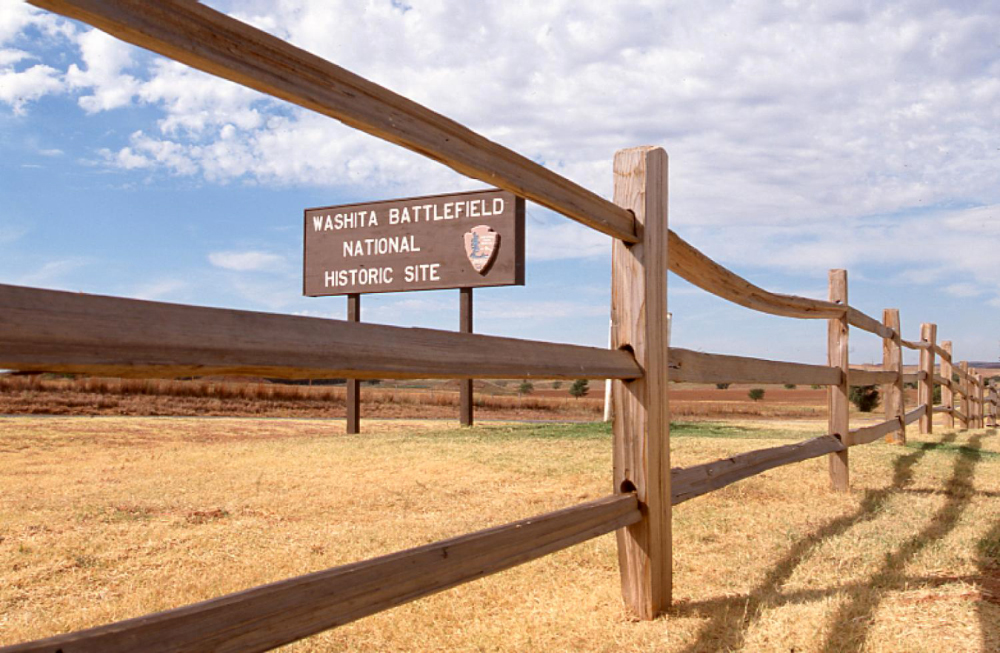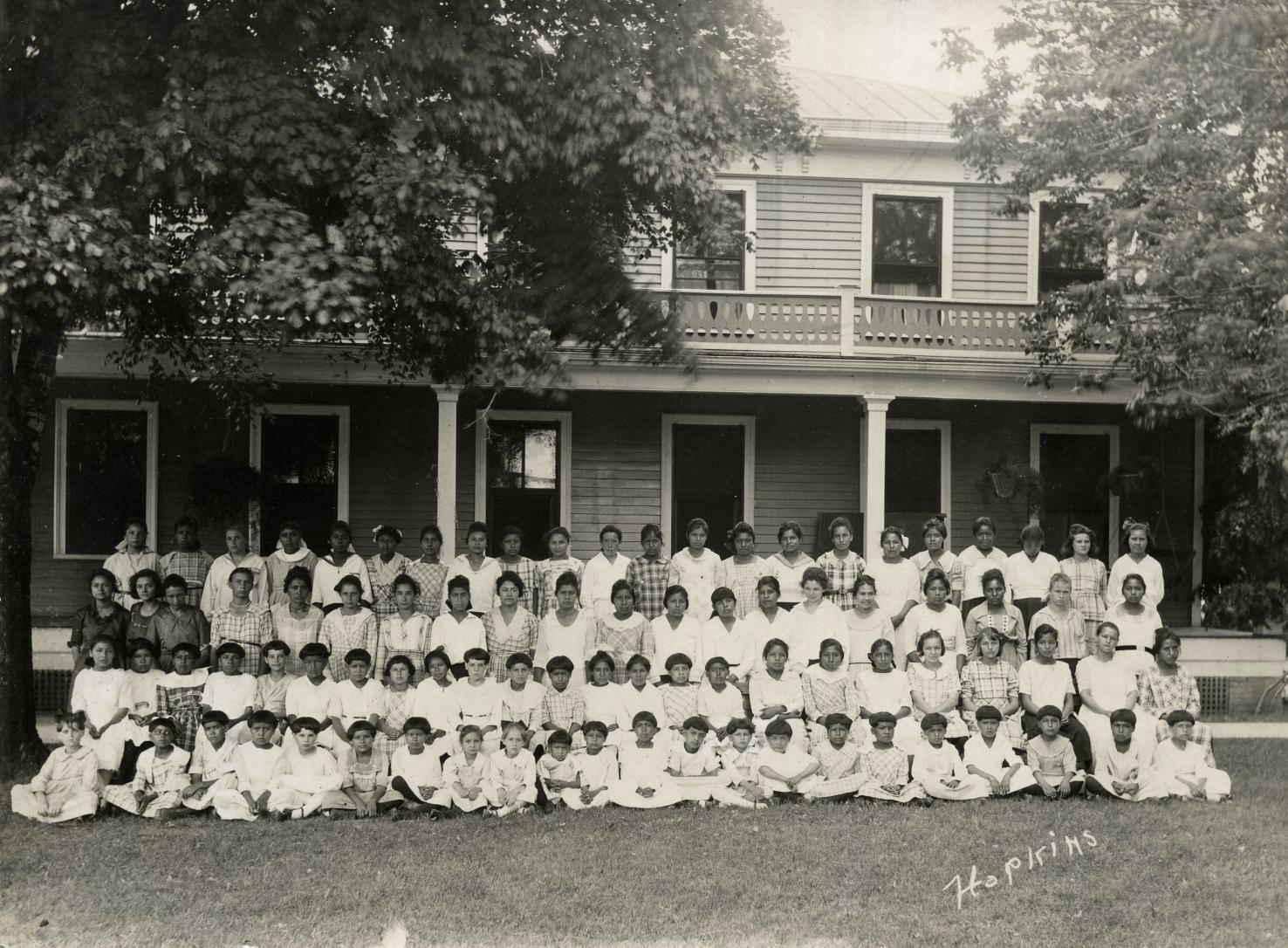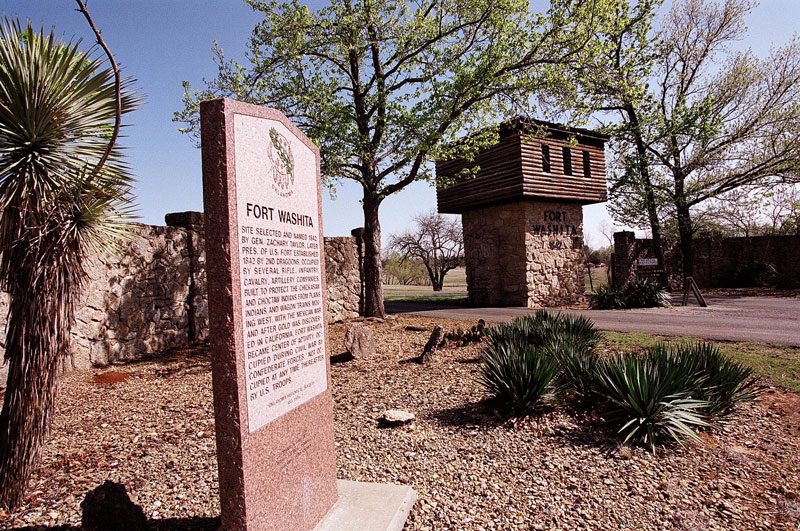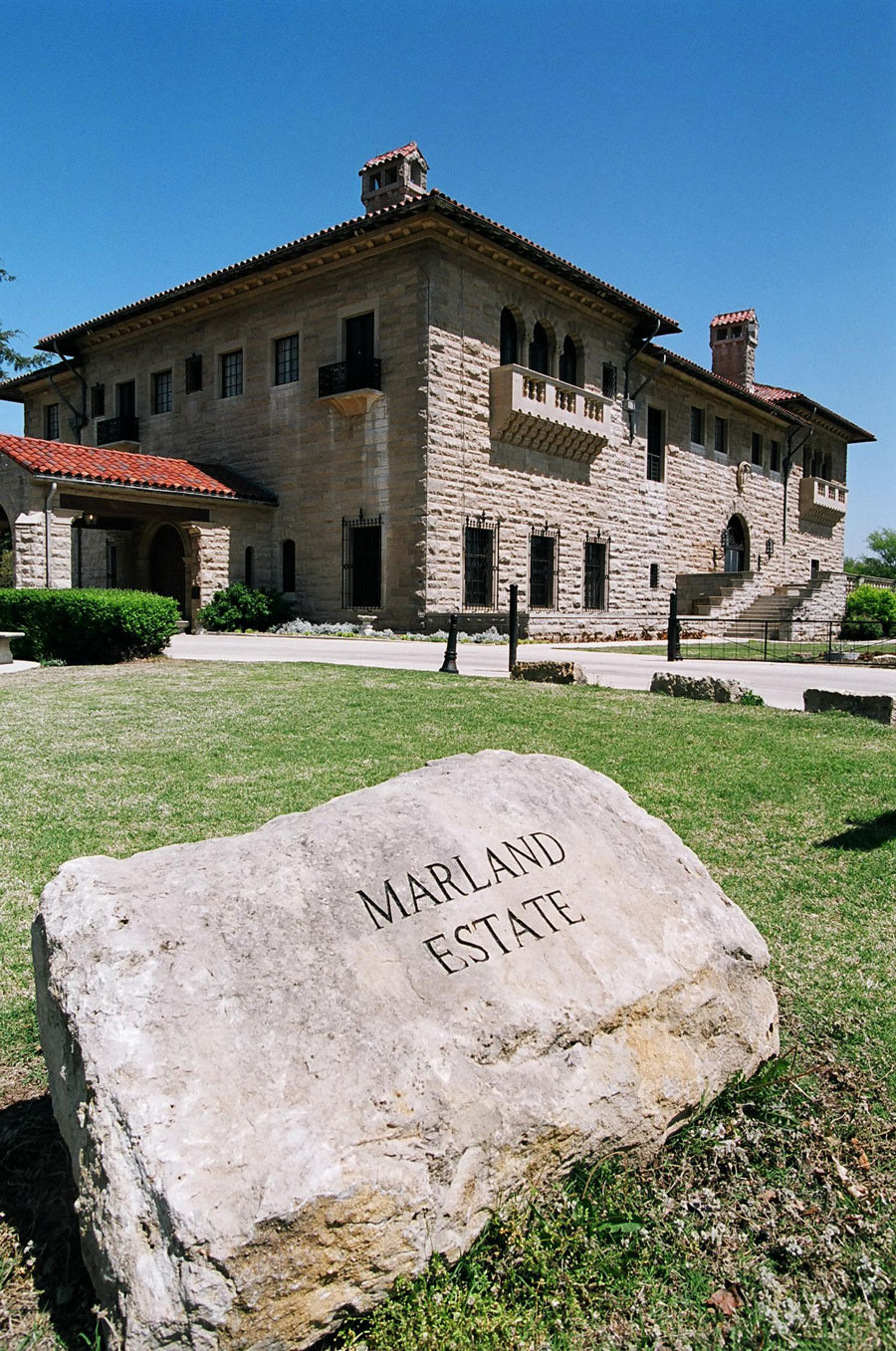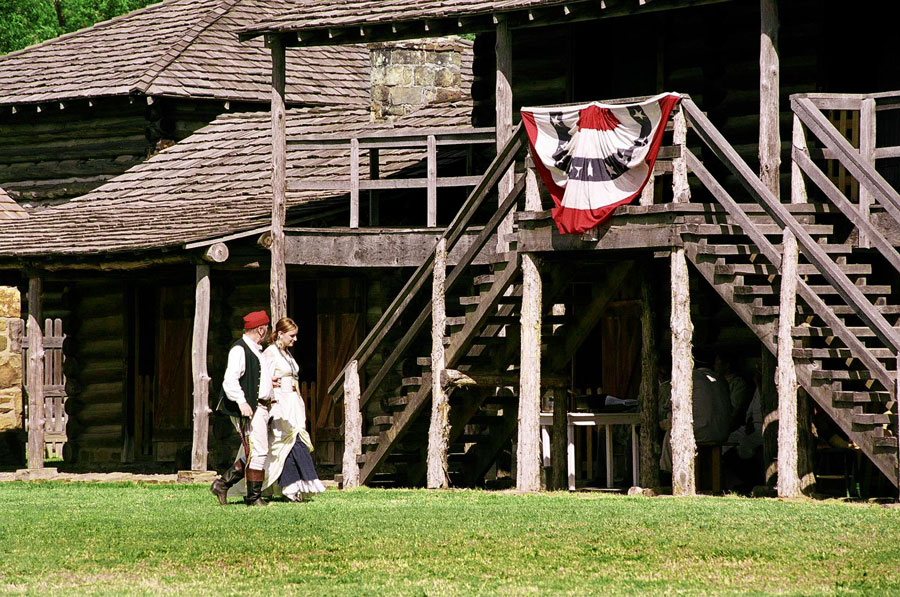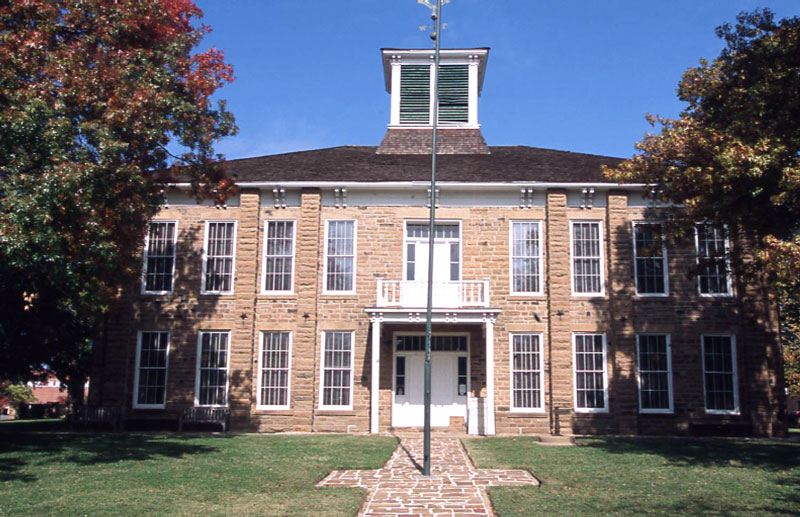The Encyclopedia of Oklahoma History and Culture
NATIONAL HISTORIC LANDMARKS.
The National Historic Sites Act of 1935 established the National Historic Landmarks (NHL) program and authorized the secretary of the interior to administer it. The purpose of the program is to recognize buildings, sites, and objects that represent the prehistory and history of the United States and to encourage their long-range preservation. The secretary identifies places for study, assesses their national significance, and with the advice of the National Park System Advisory Board, designates eligible properties as NHLs. Each NHL is automatically entered in the National Register of Historic Places. In addition to the benefits extended to all National Register properties, the secretary issues a commemorative plaque for each NHL, annually reports to Congress on the status of these national treasures, and provides special financial and technical assistance to NHL owners. The act also established that the preservation of our nation's historic properties for the use and benefit of its citizens is an important matter of public policy, and when it is appropriate for the National Park Service to acquire historic property for the National Park System, only NHLs are considered. As of February 2013 twenty-two Oklahoma properties were recognized as NHLs.
The Bizzell Library at the University of Oklahoma in Norman, Cleveland County, is the university's main library. The building is nationally significant for its association with the segregation case McLaurin v. Oklahoma State Regents (1950), one of four cases that later served as the basis for the decision in Brown v. Topeka Board of Education (1954). George McLaurin, a retired teacher, had gained admittance to the University of Oklahoma but was forced to sit and study apart from white students in the library.
Boley Historic District is in Boley, Okfuskee County. Founded in 1903 as a product of Oklahoma's settlement patterns, Boley was the largest and most successful All-Black town. Extolled by Booker T. Washington, the community was a commercial, political, and social success until a combination of Jim Crow laws and a poor agricultural economy stymied further success in the 1920s.
Boston Avenue Methodist Episcopal Church, South, in Tulsa, Tulsa County, embraced new technologies and modern architectural style. The 1929 building was at the forefront of modern church design and was designated an NHL under the program's architectural theme study.
Camp Nichols, in Cimarron County near Wheeless, Oklahoma, is the site of a military cantonment constructed on high ground overlooking the Cimarron River. Established under the command of Col. Christopher "Kit" Carson in spring 1865, the camp was abandoned less than six months later due to decreased threats from Kiowa and Comanche raiding parties. A square breastworks of stone and banked earth still surround the compound where officers and soldiers were housed.
The Cherokee National Capitol in Tahlequah, Cherokee County, a red brick, Italianate-style building, served as the capitol building for the Cherokee Nation from 1869 to 1907. Forced from their homelands in southeastern United States, the Cherokee established a sophisticated governmental system, including district courts and representative government, in Indian Territory.
The Creek National Capitol in Okmulgee, Okmulgee County, served not only as the seat of the Creek Confederacy from 1868 to 1907 but also as the home to the Inter-Tribal Council, in which the Creek Nation took the lead in fostering relationships between the Five Tribes and the newly arrived Plains Indians.
Deer Creek Site, in the Newkirk vicinity, Kay County, is the location of an early eighteenth century (1700–1760 A.D.) Wichita village associated with the French fur trade. The site contains numerous depressions, believed to be the locations of houses and trash mounds, that have yielded prehistoric debris and historic trade goods, including glass trade beads, gun parts, musket flints, lead balls, axe heads, and hoes.
The E. W. Marland Mansion in Ponca City, Kay County, was built by E. W. Marland, Oklahoma governor from 1934 to 1938 and independent oilman who pioneered the vertical integration of the oil industry. He commissioned this estate at the height of his wealth and power. John Duncan Forsyth designed the home, which was completed in 1926.
Fort Gibson at Fort Gibson, Muskogee County, established in 1824 under the command of Gen. Matthew Arbuckle, was named for U.S. Army Commissary Gen. George Gibson. The war department abandoned the fort in 1890. In 1938 the Works Progress Administration reconstructed the stockade buildings. The fort is of national significance because it served as the end of the "Trail of Tears" traveled by the Five Tribes who were removed from the southern United States during the 1830s and 1840s. Fort Gibson was also the hub for both military and civilian administrative programs implemented by the federal government on the Great Plains frontier.
Fort Sill, in Comanche County, established in January 1869 by Gen. Philip H. Sheridan, is nationally significant for serving as a base of operations for military campaigns against the southern Plains Indians and as the administrative center for Pres. Ulysses S. Grant's "peace policy" in Indian Territory. In 1911 the School of Fire for the Field Artillery (later the U.S. Army Field Artillery School) was established at the fort.
Fort Washita, in the Durant vicinity, Bryan County, was established by Gen. Zachary Taylor in 1842. The fort is nationally significant as the post that provided protection for the Chickasaw and Choctaw against the nomadic Comanche and Apache and as a way station for travelers along the southern Butterfield Overland Mail route.
The George M. Murrell House, Cherokee County, was built in 1845 by Virginian George M. Murrell, who married a niece of Cherokee Principal Chief John Ross. Located at Park Hill, it is a two-story, frame, weather-boarded, Federal-style house with a native limestone foundation. The Murrell House is nationally significant as an example of the house styles built by Cherokee leaders during the postremoval period of Indian Territory. In 2018 the official name of the historic house was changed to Hunter's Home.
The Guthrie Historic District in Guthrie, Logan County, is a well-preserved, late-nineteenth- to early-twentieth-century commercial downtown. Guthrie was born on April 22, 1889, during the land run into the Unassigned Lands of central Oklahoma. Thereafter, Guthrie served as the territorial capital from 1890 until 1907 and then became Oklahoma's first state capital. The removal of the state government to Oklahoma City in 1910 doomed the town's future but preserved its past. The district is nationally significant for the information it conveys about settlement patterns in the United States.
Honey Springs Battlefield, near Rentiesville, Muskogee County, was site of the Battle of Honey Springs (also called Elk Creek), on July 17, 1863. This was the largest engagement of the Civil War fought in the Indian Territory. Often called a turning point in the war in the Trans-Mississippi West, this was also the largest battle in which Indians, African Americans, and whites fought with and against one another. It was also the first major engagement in which African American troops secured victory over Confederate forces.
McLemore Archaeological Site, near Colony, Washita County, dates from approximately 1330 to 1360 A.D. It is a late Plains Village site that helped define the Washita River focus. The site was reassigned to the Washita River phase and contains evidence of a nearby community cemetery with numerous burials, some of which show evidence of violent deaths. The site has yielded an abundance of prehistoric artifacts. The practice of tattooing is implied by designs applied to clay figurines recovered from the site.
The 101 Ranch, Ponca City vicinity, Kay County, was a diversified ranch and home of the 101 Wild West Show, a pioneering entertainment venue that featured notable performers such as Tom Mix, Will Rogers, and Bill Pickett, the African American cowboy famous for inventing the rodeo event called "bulldogging." The Miller Brothers were the founders and owners of the ranch and Wild West show.
Platt National Park Historic District, near Sulphur, in Murray County, is part of the Chickasaw National Recreation Area. Created in 1906 by federal act, Platt National Park was important during the New Deal response to the Great Depression. The historic district is nationally significant because it tangibly represents federal policy in conservation, outdoor recreation, and national resource planning and, more specifically, Civilian Conservation Corps (CCC) planning and landscape conservation activities in the 1930s.
Price Tower, a nineteen-story, multiuse building designed by Frank Lloyd Wright, was constructed in Bartlesville, Washington County, and opened in 1956. It illustrates the architect's deft handling of the concept of the cantilevered tower. Wright considered it to be the only "skyscraper" that he ever designed. It is one of only three Wright buildings that have been designated as NHLs.
Sequoyah's Cabin, Sequoyah County, is located eleven miles northeast of present Sallisaw. The one-room log cabin was built circa 1829. In 1936 a stone building was constructed over the cabin to protect it. The cabin is nationally significant as the home of Sequoyah, inventor of the eighty-five-character Cherokee syllabary.
Stamper Archaeological Site, Optima vicinity, Texas County, is a late Plains Village site dating from approximately 1300 A.D. and assigned to the Antelope Creek phase. The pueblo-style apartment construction methods, black-on-white Southwest trade-pottery sherds, obsidian waste flakes, and Olivella shell beads and shell pendants found at the site attest to contacts with Pueblo groups to the west.
The Washita Battlefield, Cheyenne vicinity, Roger Mills County, is the site of one of the most significant engagements of the Indian wars on the Great Plains during the last half of the nineteenth century. On the snowy, bitterly cold morning of November 27, 1868, Lt. Col. George Armstrong Custer led eight hundred men of the Seventh Cavalry in a surprise attack against Black Kettle's Southern Cheyenne village on the Washita River.
Wheelock Academy, in the Millerton vicinity in McCurtain County, was established in 1832 by Presbyterian missionary Alfred Wright. Wheelock is nationally significant as the first academy in the Choctaw Nation and as the model that other tribes in Indian Territory used when creating their own schools. Wheelock closed in 1955.
See Also
Bibliography
National Historic Landmarks Nomination Files and National Register of Historic Places Nomination Files, State Historic Preservation Office, Oklahoma Historical Society, Oklahoma City.
National Park Service, 36 CFR Part 65, National Historic Landmarks Program, U.S. Department of the Interior, Washington, D.C.
Citation
The following (as per The Chicago Manual of Style, 17th edition) is the preferred citation for articles:
Jim Gabbert, Melvena Heisch, Glen Roberson, and Charles Wallis, “National Historic Landmarks,” The Encyclopedia of Oklahoma History and Culture, https://www.okhistory.org/publications/enc/entry?entry=NA010.
Published January 15, 2010
© Oklahoma Historical Society

